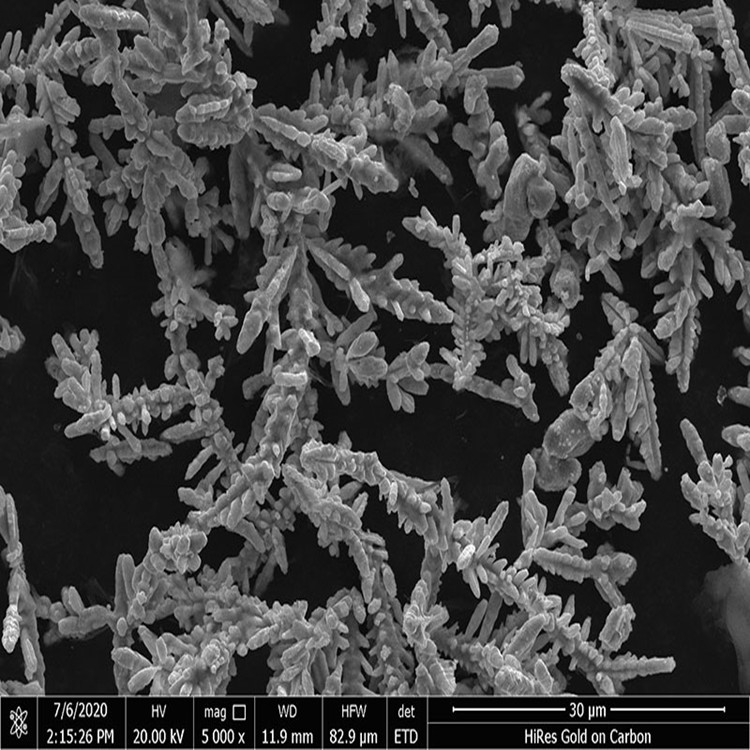Unraveling the Structural Characteristics of Dendritic Silver-coated Copper Powder
2024-05-27
In the realm of advanced materials science, dendritic silver-coated copper powder stands out for its unique properties and potential applications. This fascinating material boasts a dendritic structure, which refers to a branching or tree-like morphology. Let's delve into the structural characteristics of this material and understand how its dendritic structure is formed.
Structural Characteristics
Dendritic silver-coated copper powder is characterized by a copper core that is uniformly coated with silver. The key distinguishing feature lies in its dendritic morphology, where the silver coating exhibits a branching pattern similar to the natural growth of a tree. This branching structure provides a high surface area-to-volume ratio, making it ideal for applications where surface interactions are crucial.
The dendritic structure is not only visually appealing but also serves a functional purpose. It enhances the conductivity and reactivity of the material due to the increased surface area. Furthermore, the silver coating provides corrosion resistance and improved electrical conductivity compared to pure copper powder.
Formation of Dendritic Structure
The formation of the dendritic structure in silver-coated copper powder involves a complex chemical process. Typically, this process starts with the preparation of copper particles, which serve as the core of the final product.
Next, a silver precursor is introduced into the reaction system. This precursor can be a silver salt or an organic silver compound. The choice of precursor and the reaction conditions play a crucial role in determining the final dendritic structure.
As the reaction proceeds, the silver precursor begins to decompose and deposit onto the surface of the copper particles. The deposition process is controlled by various factors, including the concentration of the silver precursor, the temperature, and the presence of additives or surfactants.
During the deposition, the silver atoms tend to nucleate and grow on the copper surface in a specific pattern. The growth rate and directionality of the silver branches are influenced by the surface energy and the diffusion rate of silver atoms.
As the reaction continues, the silver coating gradually develops into a dendritic structure with multiple branches extending out from the copper core. The final dendritic structure is determined by the balance between the deposition rate, diffusion rate, and surface energy of the system.
Conclusion
Dendritic silver-coated copper powder is a unique material with a fascinating dendritic structure. This structure is formed through a controlled chemical process involving the deposition of silver onto a copper core. The resulting high surface area-to-volume ratio and improved conductivity make it a promising candidate for various applications in electronics, catalysis, and energy storage. Further research into the formation mechanisms and optimization of the dendritic structure could lead to even more exciting applications of this remarkable material.



